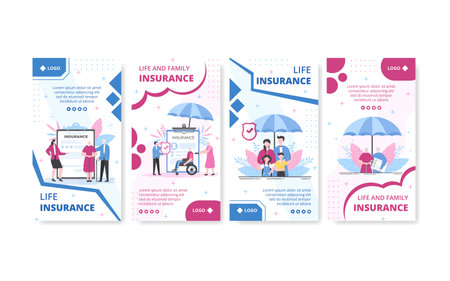Personal Factors Influencing Your Insurance Premiums
When it comes to income protection and critical illness insurance in the UK, your personal circumstances play a major role in determining how much you’ll pay for cover. Insurers look closely at several key aspects of your life before setting your premium. Age is one of the most significant factors: generally, the younger you are when you take out a policy, the lower your premiums will be. This is simply because younger people are statistically less likely to make a claim.
Health is another crucial element. If you’re in good health, with no serious medical conditions or history of major illnesses, you’ll usually benefit from lower premiums. On the flip side, any pre-existing conditions or a family history of certain illnesses can push costs up, as insurers see you as a higher risk.
Your occupation also matters. Jobs that are considered high-risk – like construction, offshore work, or anything involving hazardous environments – tend to attract higher premiums. Office-based roles or jobs with minimal physical risk are generally seen as safer bets by insurers.
Lastly, lifestyle choices come under scrutiny. Smokers and those who regularly drink large amounts of alcohol can expect to pay more for their policies. Likewise, participating in dangerous hobbies such as extreme sports could see your premiums rise. Essentially, anything that increases your likelihood of making a claim will be reflected in the cost of your cover.
In summary, insurers assess your age, health status, job type, and lifestyle habits to gauge the risk involved in insuring you. The lower the perceived risk, the more affordable your income protection or critical illness insurance is likely to be.
2. Policy Features and Coverage Levels
When taking out income protection or critical illness insurance, the specific features of your policy play a major role in determining how much you’ll pay in premiums. Here’s a breakdown of the main elements that can affect your costs:
Amount of Cover
The more financial cover you choose, the higher your monthly premium will be. For example, if you want to insure a larger proportion of your salary or get a lump sum payout for critical illness, expect to pay more. It’s much like insuring a luxury car versus an old banger – the more valuable the payout, the higher the cost to cover it.
Length of Policy
How long you want the policy to run also impacts your premium. Policies that stretch over decades are riskier for insurers than those lasting just a few years, so longer terms usually mean higher premiums.
| Policy Term | Typical Premium Impact |
|---|---|
| Short-term (e.g., 5 years) | Lower premiums |
| Medium-term (e.g., 10-15 years) | Moderate premiums |
| Long-term (e.g., up to retirement age) | Higher premiums |
Optional Add-ons
You can tailor your policy with extra features or ‘riders’ – but these bells and whistles come at a price. Popular add-ons include:
- Waiver of Premium: Pauses your payments if you’re unable to work due to illness or injury.
- Indexation: Ensures your cover keeps pace with inflation by increasing the payout (and premium) over time.
- Fracture Cover: Pays out if you break certain bones – handy if you’re into rugby or cycling!
- Total Permanent Disability Cover: Offers extra financial support if you become permanently unable to work.
Add-ons give peace of mind but remember, each one nudges up what you pay each month.
Summary Table: How Policy Features Affect Premiums
| Feature | Description | Effect on Premiums |
|---|---|---|
| Higher amount of cover | Bigger payout on claim | Increases premiums |
| Longer policy term | Cover lasts longer | Increases premiums |
| Add-ons/riders | Extra benefits (e.g., waiver of premium) | Increases premiums for each addition |
| No add-ons, basic cover | Straightforward protection only | Keeps premiums lower |
The bottom line? Choosing more comprehensive cover or added extras will drive up your monthly costs, while sticking to essential features is usually easier on your wallet. Always weigh up what level of protection fits your needs and budget before locking in a policy.

3. The Role of Medical History and Pre-existing Conditions
When applying for income protection or critical illness insurance in the UK, your medical history plays a significant role in determining how much you pay for cover. Insurers will ask detailed questions about your health background, including any past or existing medical issues. This process is known as medical underwriting. Essentially, if you have a clean bill of health with no previous or ongoing conditions, you are considered lower risk and are likely to benefit from more affordable premiums.
If, however, you have a history of certain illnesses—such as diabetes, heart disease, or cancer—or if you currently live with a chronic condition, insurers may view you as a higher risk. As a result, they might increase your monthly premium to reflect the possibility that you could make a claim sooner or more often than someone in good health. In some cases, specific pre-existing conditions might be excluded from your policy altogether, meaning you would not be able to claim for those particular issues.
It’s also important to note that even common conditions like high blood pressure or asthma can affect your premiums. The insurer will typically want details about how well-controlled your condition is, what medication you take, and whether it has led to any complications in the past. Full disclosure is essential; withholding information could invalidate future claims. Ultimately, your individual health profile directly influences both the cost and scope of the protection available to you.
4. Occupation and Work-Related Risks
When determining the cost of income protection or critical illness insurance, insurers place considerable emphasis on your occupation and the risks associated with it. In simple terms, if your job involves more physical danger or health hazards, you are considered more likely to make a claim. As a result, premiums for certain professions can be noticeably higher compared to those in lower-risk occupations.
How Your Job Impacts Your Insurance Premium
Insurers categorise jobs based on the likelihood of injury or illness occurring at work. For instance, someone working as an office administrator generally faces fewer risks than a construction worker or a firefighter. The more hazardous your job, the greater the chance that you might need to claim on your policy—this is reflected in higher premium costs.
Examples from Common UK Professions
| Occupation | Risk Level | Typical Impact on Premium |
|---|---|---|
| Office Worker (e.g., Accountant) | Low | Lower premiums due to minimal risk of workplace injury or serious illness |
| NHS Nurse | Medium | Slightly higher premiums reflecting increased exposure to illnesses and shift work stress |
| Builder/Construction Worker | High | Noticeably higher premiums because of the potential for accidents and physical strain |
| Lorry Driver | Medium-High | Increased premiums due to long hours, risk of road accidents, and sedentary lifestyle concerns |
| Firefighter | Very High | Highest premiums as a result of significant daily risks and exposure to hazardous situations |
Plain English Explanation:
If you have a desk job like working in finance or administration, your insurance will usually cost less because theres less risk involved day-to-day. However, if youre out on building sites, driving long distances, or responding to emergencies as part of your job, insurers see you as being at greater risk—and youll pay more each month for cover. This system ensures that people whose work puts them in harms way contribute more towards their own financial safety net.
5. Lifestyle Choices: Smoking, Drinking, and More
When it comes to calculating your income protection or critical illness insurance premium in the UK, your lifestyle choices play a significant role. Insurers are particularly interested in habits such as smoking, alcohol consumption, recreational drug use, and even exercise routines. Let’s break down how these factors impact your premiums and what practices are commonly followed by UK insurers.
Smoking Status
If you are a smoker—or if you have used tobacco products within the last 12 months—expect your premiums to be noticeably higher than those of a non-smoker. This is because smoking is linked to a wide range of health problems, from respiratory diseases to various forms of cancer and cardiovascular issues. UK insurers will often ask about cigarette, cigar, pipe tobacco, and even nicotine replacement product use when you apply for cover. If you quit smoking and remain smoke-free for at least 12 months, you can usually reapply for non-smoker rates.
Alcohol Consumption
How much and how often you drink also affects your premium. Insurers in the UK typically ask about your weekly alcohol intake during the application process. Regularly exceeding the recommended limits—currently 14 units per week for both men and women—can result in higher premiums or, in some cases, even exclusions on your policy. Heavy or binge drinking increases the risk of several illnesses and accidents, which is why insurers treat it as a red flag.
Other Lifestyle Considerations
Beyond smoking and drinking, insurers may look into other aspects of your lifestyle. Questions might include whether you participate in high-risk sports or hobbies (such as mountaineering or skydiving), your BMI (Body Mass Index), and even your general activity level. The more risks associated with your lifestyle choices, the higher your premium may climb.
Common Practices Among UK Insurers
Most UK insurance providers follow a standardised approach: they gather information through detailed health and lifestyle questionnaires. Some may require additional medical checks if your answers raise concerns. It’s important to answer these questions honestly; providing false information can lead to claims being denied later on. In summary, making healthier lifestyle choices—like quitting smoking or moderating alcohol intake—not only benefits your wellbeing but can also lower the cost of protecting your income or critical illness cover.
6. External and Market Factors
When considering the cost of income protection and critical illness insurance in the UK, it’s important to look beyond just your personal circumstances. There are several external and market factors that can influence premiums, sometimes causing them to rise or fall quite unexpectedly.
Wider Economic Conditions
The overall state of the economy plays a significant role in shaping insurance costs. During times of economic uncertainty or recession, insurers may face higher claims and increased financial risk, prompting them to adjust their pricing accordingly. For example, if unemployment rises or there is a downturn in national productivity, insurers might anticipate more claims on income protection policies, leading to higher premiums for new policyholders.
Regulatory Changes
The insurance sector in the UK is closely regulated by bodies like the Financial Conduct Authority (FCA) and the Prudential Regulation Authority (PRA). When these regulators introduce new rules—such as stricter requirements on how insurers must hold capital reserves or changes aimed at enhancing consumer protections—these can affect the operating costs of insurers. Often, such additional compliance costs are passed on to customers in the form of increased premiums.
Competition Among Insurers
The level of competition within the UK insurance market also has a direct impact on premium pricing. When many insurers are vying for customers, they may lower their prices or offer enhanced features to attract new business. This competitive pressure can help keep premiums more affordable. Conversely, if a few large companies dominate the market or some providers exit certain sectors, there may be less incentive to keep prices low, potentially resulting in higher costs for consumers.
What Does This Mean for You?
In summary, even if your personal profile remains unchanged, your premiums could still fluctuate due to these broader external influences. It’s wise to keep an eye on industry news and economic trends, as well as regulatory updates, since they can indirectly affect what you pay for cover. Comparing quotes regularly and staying informed about market developments can help ensure you’re getting value for money in an ever-changing insurance landscape.


